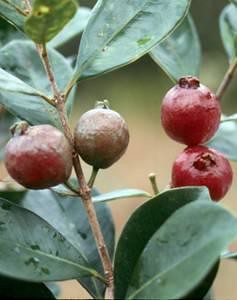
This month a Brazilian beetle, tested for years by the U.S. Forest Service, is being released in Hawaii to hopefully devourer a non-native fruit known as strawberry guava. Though it sounds delicious, this colorful plant is invading and threatening Hawaii’s native forests and watersheds and has already overtaken hundreds of thousands of acres on the archipelago in the middle of the Pacific Ocean.
Introduced to Hawaii in 1825, strawberry guava is a tree native to Brazil and has since advanced through Hawaii’s native forests. Removal is extremely difficult in remote forest areas. The species has also adversely affected Hawaii’s watersheds. A University of Hawaii study shows that strawberry-guava-infested forests lose 27 percent more water than native forests.
Added to all this degradation, Forest Service scientists report that the millions of pounds of dropped fruit are a primary source of oriental fruit flies which invade Hawaii agriculture crops and cost the state millions of dollars annually in quarantine treatment and control efforts.
“We hope people understand that release of this biological control insect will not kill all strawberry guava,” said Tracy Johnson, lead researcher for the U.S. Forest Service in Hilo. “There will still be a lot of strawberry guava around. Slowing its reproduction and invasiveness will help restore the balance in favor of the native forest plants like”ohia.”

For more than 15 years, U.S. Forest Service scientists have been testing for potential natural control insects for strawberry guava. Their results have determined that the Brazilian beetle known officially as T. ovatus, will slow the spread of strawberry guava providing natural control of the species and will not harm other native or beneficial plants or insects.
T. ovatus lives most of its life inside the strawberry guava leaves, causing leaf galls or bumps, which reduces the vigor of the plant but does not kill it. The damage is similar to galls frequently found on `ohia which are caused by native insects.
An initial release is scheduled at one site on Hawaii Island where progress will be monitored by the U.S. Forest Service. For more information go to visit the Forest Service's website.
